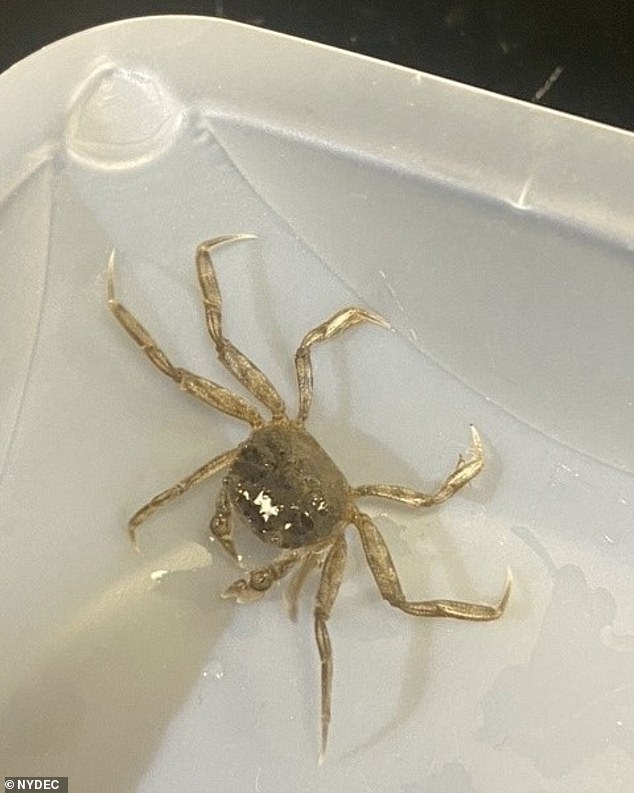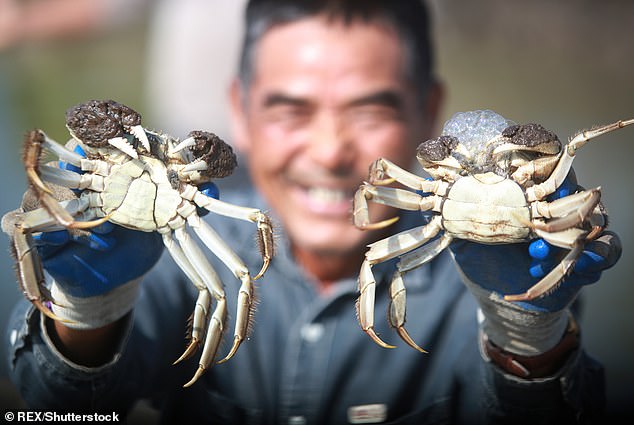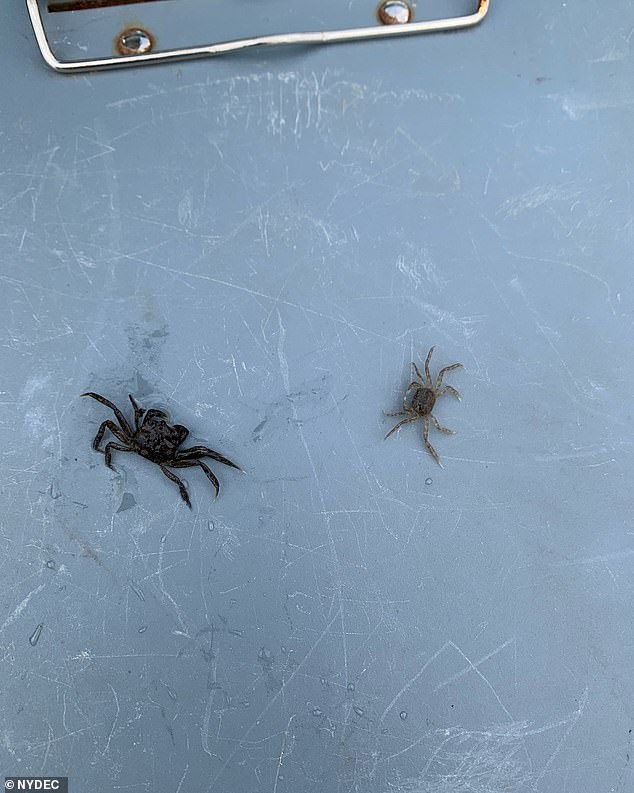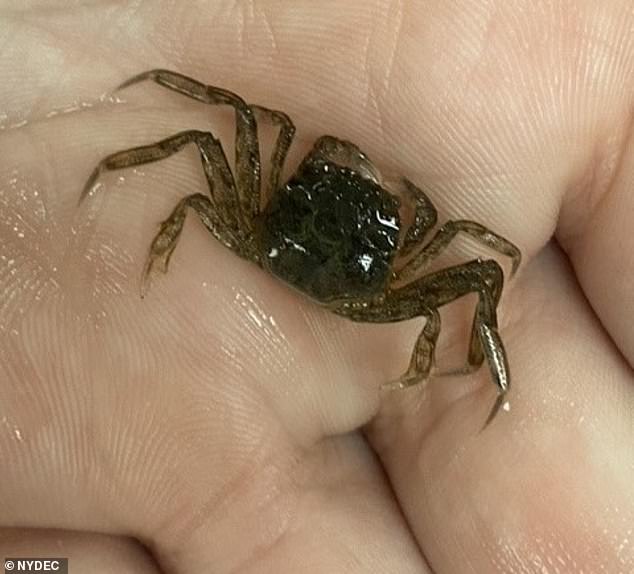Invasive ‘hairy’ Chinese crabs with claws that terrorize fishermen are taking over New York
An invasive crab from China, known to terrorize and jam the cooling systems of fishermen’s power plants, is now taking over New York.
The New York Department of Environmental Conservation (NYDEC) recently issued a warning about the mitten crab, known for its fuzzy claws, and urged residents to capture the crab, place it in a freezer and call their local officials.
Sightings of the crab have been reported along the Hudson and Nissequogue Rivers and the Long Island Sound, following a trend from previous invasions in San Francisco, the Chesapeake Bay and even London’s River Thames.
Marine scientists have also raised concerns that the invasive creature could displace many vulnerable local species and change the food web.
“These crabs move between brackish and marine waters,” conservationists say, “and have the potential to disrupt local ecosystems by competing with native marine life.”
State officials documented sightings of the invasive Chinese mitten crab along the Hudson and Nissequogue Rivers and the Long Island Sound, following a trend of previous invasions in San Francisco, the Chesapeake Bay and even London’s River Thames (as pictured above)

The invasive crab has been known to steal fishermen’s bait, damage equipment and worse, clog power plant cooling systems, according to the New York Department of Environmental Conservation.
NYDEC described the mitten crab (Eriocheir sinensis), which is native to East Asia, as a ‘generalist predator‘capable of altering entire food webs as they ‘forage on native fish eggs and invertebrates.
The mitten crab’s digging techniques can cause “riverbank instability and increased erosion, which in turn increases flood risk and reduces habitat.”
The light brown to olive-colored Chinese crustaceans start out small and their claws do not develop until adulthood.
The claws have dense patches of brown bristles or ‘setae’, which give mitten crabs their name.
Commercial shrimp trawlers brought the crabs to the U.S. in 1992, first establishing themselves in San Francisco Bay.
And because they are a delicacy in Asia, the creatures have been illegally imported into markets in Los Angeles and San Francisco; the US does not allow the import, export, or sale of live mitten crabs.
The first mitten crab was reported in New York in 2007 when it was found in a commercial crab pot in the Hudson River near Tappan Zee Bridge.
Conservationists implored the public to look out for “a notch in the carapace between the eyes and four small lateral spines on each side of the carapace as additional identification marks in young crabs.”
NYDEC told New Yorkers to make sure they “inspect and remove debris and mud from boats, trailers and equipment” with a view to spotting the crab.

NYDEC described the mitten crab (Eriocheir sinensis) as a ‘generalist predator’ capable of altering entire food webs while ‘foraging on native fish eggs and invertebrates’

The light brown to olive Chinese crustaceans start out small (above) and the department advised that the dense patches of brown bristles or ‘setae’ on their claws, which give mitten crabs their name, do not develop until adulthood.

Conservationists implored the public to look out for ‘a notch in the carapace between the eyes and four small lateral spines on each side of the carapace for additional identification markings in young crabs’ (as pictured above)
State conservation authorities recommended that if a mitten crab is spotted, it should be removed from the environment, photographed and then frozen for later analysis.
“Be sure to take identifying photos and record your exact location,” NYDEC said. “Report your sighting to the Bureau of Invasive Species and Ecosystem Health by emailing: isinfo@dec.ny.gov.”
The department is part of the national Mitten Crab Network, a partnership among several U.S. state, federal and research organizations that has been successful in repelling the invasive crab from the West Coast since 2010.
The last confirmed record of a living mitten crab along the East Coast was obtained in 2014 from the Chesapeake Bay near Maryland’s Patapsco River, according to a map maintained by the Smithsonian Institute.
“Wall crabs have also been found sporadically in the Great Lakes and the U.S. Gulf Coast,” the institute said, “but have not established a breeding population in either region.”
NYDEC officials posted a general warning the department’s Facebook page in an effort to combat the spread of potentially dangerous invasive species of any kind.
“Remember, never release a non-native animal or plant into the wild,” department conservationists said.
